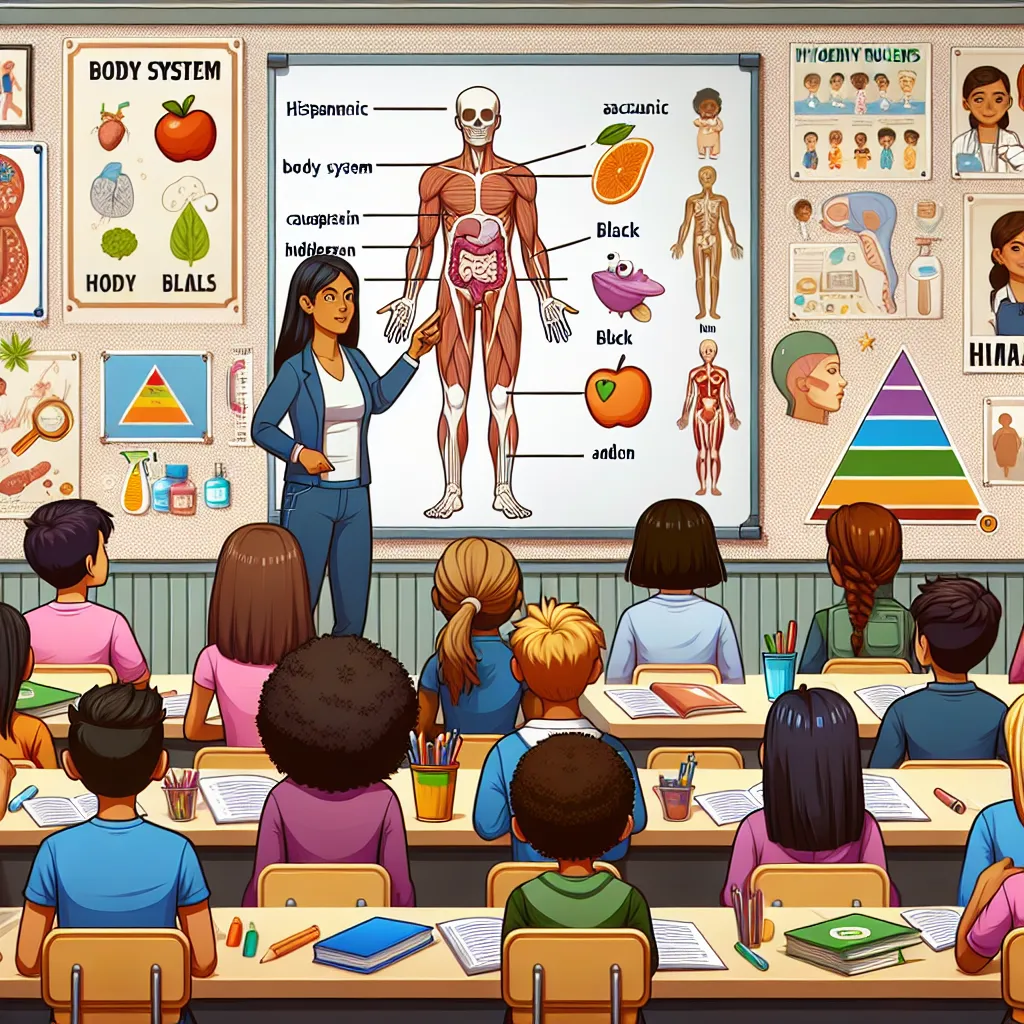Welcome to our IELTS Reading practice session focused on “The Role of Public Health Education in Schools.” This comprehensive guide will help you prepare for the IELTS Reading test by providing a full-length practice test with three passages of increasing difficulty, along with a variety of question types and detailed answers. Let’s dive in and enhance your reading skills!
Nội dung bài viết
- Introduction to the Topic
- IELTS Reading Practice Test
- Passage 1 – Easy Text
- The Foundations of School Health Education
- Questions 1-7
- Questions 8-10
- Passage 2 – Medium Text
- Integrating Public Health Education into School Curricula
- Questions 11-15
- Questions 16-20
- Passage 3 – Hard Text
- The Multifaceted Impact of Public Health Education in Schools
- Questions 21-26
- Questions 27-30
- Answer Key and Explanation
- Passage 1 – Easy Text
- Passage 2 – Medium Text
 Public health education in schools
Public health education in schools
Introduction to the Topic
Public health education in schools plays a crucial role in shaping the health knowledge, attitudes, and behaviors of young people. This topic is not only relevant for IELTS Reading practice but also highlights the importance of health literacy in our society. As you work through this practice test, you’ll gain insights into how schools contribute to public health awareness and the long-term benefits of health education programs.
IELTS Reading Practice Test
Passage 1 – Easy Text
The Foundations of School Health Education
Public health education in schools has become an increasingly important aspect of modern education systems worldwide. As societies grapple with various health challenges, from obesity to mental health issues, schools have emerged as critical venues for promoting healthy lifestyles and preventing disease. This approach recognizes that health and education are inextricably linked: healthier students are better learners, and education is a key determinant of lifelong health outcomes.
The concept of school health education dates back to the early 20th century, but it has evolved significantly over the years. Initially focused primarily on physical hygiene and the prevention of infectious diseases, modern health education curricula now encompass a wide range of topics. These include nutrition, physical activity, mental health, substance abuse prevention, sexual health, and environmental health. The goal is to equip students with the knowledge, skills, and attitudes necessary to make informed decisions about their health throughout their lives.
One of the key strengths of school-based health education is its potential to reach a large and diverse population of young people. Schools provide a structured environment where health messages can be consistently delivered and reinforced over time. Moreover, schools can serve as hubs for community health initiatives, extending the impact of health education beyond the classroom to families and the broader community.
Research has consistently shown the benefits of comprehensive health education programs in schools. These benefits include improved health knowledge and behaviors among students, reduced risk-taking behaviors, and even improved academic performance. For example, studies have found that students who participate in regular physical education and health classes tend to have better attendance rates and higher test scores.
However, implementing effective health education programs in schools is not without challenges. These include limited time in the school day, competing academic priorities, lack of trained health educators, and in some cases, controversy over sensitive topics such as sexual health education. Despite these obstacles, many schools and education systems are finding innovative ways to integrate health education into their curricula, recognizing its vital role in preparing students for healthy, productive lives.
As we move forward, the role of public health education in schools is likely to become even more critical. With the rise of new health challenges, such as the global obesity epidemic and the increasing prevalence of mental health issues among young people, schools will continue to be at the forefront of efforts to promote public health and well-being. By investing in comprehensive health education programs, we invest in the future health and prosperity of our societies.
Questions 1-7
Do the following statements agree with the information given in the passage? Write
TRUE if the statement agrees with the information
FALSE if the statement contradicts the information
NOT GIVEN if there is no information on this in the passage
- Health education in schools only focuses on physical hygiene and infectious diseases.
- School-based health education has the advantage of reaching a large number of young people.
- Health education programs in schools have been shown to improve academic performance.
- All schools have trained health educators to implement health education programs.
- The concept of school health education originated in the early 21st century.
- Some topics in health education, such as sexual health, can be controversial.
- Health education programs are equally successful in all schools worldwide.
Questions 8-10
Complete the sentences below. Choose NO MORE THAN THREE WORDS from the passage for each answer.
- Schools provide a __ __ where health messages can be consistently delivered to students.
- Research has shown that students participating in regular health classes tend to have better __ __ and higher test scores.
- The rise of new health challenges, such as the global obesity epidemic, makes the role of public health education in schools even more __.
Passage 2 – Medium Text
Integrating Public Health Education into School Curricula
The integration of public health education into school curricula represents a significant shift in educational paradigms, acknowledging the inextricable link between health and academic success. This approach goes beyond traditional health classes, embedding health-related content and skills across various subjects and school activities. The rationale behind this integration is multifaceted, addressing not only the immediate health needs of students but also preparing them for lifelong health literacy and decision-making.
One of the primary challenges in implementing comprehensive health education is the already crowded school curriculum. Educators and policymakers are tasked with balancing academic requirements with the need for health education. Innovative approaches have emerged to address this challenge, such as cross-curricular integration. For instance, mathematics classes might incorporate lessons on calculating caloric intake or analyzing health statistics, while language arts courses could include readings and discussions on public health issues. This approach not only reinforces health concepts but also provides real-world context for academic subjects.
The content of public health education in schools has evolved to reflect contemporary health challenges. While traditional topics such as personal hygiene and nutrition remain important, new areas of focus have emerged. These include mental health awareness, digital wellness, and environmental health. The inclusion of these topics reflects a broader understanding of health as encompassing physical, mental, and social well-being.
Mental health education, in particular, has gained prominence in recent years. Schools are increasingly recognizing their role in promoting mental health literacy and providing early intervention for mental health issues. This includes teaching students about stress management, emotional regulation, and the importance of seeking help when needed. Some schools have implemented mindfulness programs or integrated mental health discussions into existing counseling services.
Another critical aspect of modern public health education is the focus on health equity and social determinants of health. Students are taught to understand how factors such as socioeconomic status, race, and environment can impact health outcomes. This knowledge is crucial for developing empathy and promoting social responsibility among students. It also aligns with broader educational goals of fostering critical thinking and civic engagement.
The pedagogical approaches used in health education have also evolved. Interactive and experiential learning methods are increasingly favored over traditional lecture-based instruction. These might include role-playing exercises, project-based learning, or the use of digital health tracking tools. Such approaches aim to make health education more engaging and relevant to students’ lives, increasing the likelihood that they will adopt healthy behaviors.
Technology has played a significant role in transforming health education. Digital platforms and apps offer new ways to deliver health information and engage students. For example, some schools use virtual reality simulations to teach about the effects of substance abuse or gamified apps to encourage physical activity. However, the use of technology in health education also necessitates teaching digital literacy and critical evaluation of online health information.
The effectiveness of school-based health education programs is continually being evaluated and refined. Research has shown that the most successful programs are those that are comprehensive, sustained over time, and involve the broader school community, including parents and local health services. Moreover, culturally relevant and age-appropriate content is crucial for ensuring that health messages resonate with diverse student populations.
As we look to the future, the role of public health education in schools is likely to expand further. The COVID-19 pandemic has underscored the importance of public health knowledge and the role of schools in community health. It has also highlighted the need for flexibility in educational delivery, with many schools adapting to provide health education remotely. These experiences may shape future approaches to health education, potentially leading to more resilient and adaptive educational models.
In conclusion, the integration of public health education into school curricula represents a holistic approach to student development. By equipping students with health knowledge and skills, schools are not only promoting immediate well-being but also investing in the long-term health of communities. As health challenges continue to evolve, so too will the strategies for educating and empowering the next generation to lead healthy, informed lives.
Questions 11-15
Choose the correct letter, A, B, C, or D.
-
According to the passage, the integration of health education into school curricula:
A) Focuses solely on traditional health classes
B) Embeds health-related content across various subjects
C) Replaces academic subjects with health education
D) Is only implemented in specialized health schools -
The text suggests that cross-curricular integration of health education:
A) Is unnecessary in modern schools
B) Reduces the effectiveness of academic subjects
C) Provides real-world context for academic learning
D) Is only possible in mathematics and language arts -
Which of the following is NOT mentioned as a new area of focus in school health education?
A) Mental health awareness
B) Digital wellness
C) Environmental health
D) Advanced medical procedures -
The passage indicates that teaching about social determinants of health:
A) Is not relevant to school-age children
B) Promotes empathy and social responsibility
C) Should be limited to higher education
D) Contradicts other educational goals -
According to the text, the most successful health education programs are those that:
A) Focus exclusively on physical health
B) Are short-term and intensive
C) Involve only teachers and students
D) Are comprehensive and involve the broader school community
Questions 16-20
Complete the summary below. Choose NO MORE THAN TWO WORDS from the passage for each answer.
Public health education in schools has evolved to address modern health challenges. Beyond traditional topics, it now includes areas such as (16) __ __ and environmental health. The teaching methods have also changed, with a preference for (17) __ __ methods over lectures. Technology plays a crucial role, offering new ways to deliver health information, though it also requires teaching (18) __ __. Research shows that effective programs are sustained over time and culturally relevant. The COVID-19 pandemic has highlighted the importance of public health knowledge and the need for (19) __ in educational delivery. Overall, integrating public health education into curricula represents a (20) __ __ to student development, promoting both immediate well-being and long-term community health.
Passage 3 – Hard Text
The Multifaceted Impact of Public Health Education in Schools
The implementation of public health education in schools represents a paradigm shift in educational philosophy, recognizing the intricate interplay between health literacy and academic achievement. This approach transcends the traditional boundaries of health instruction, permeating various aspects of the educational experience and extending its influence far beyond the confines of the classroom. The ramifications of this educational strategy are profound and multifaceted, affecting not only individual student outcomes but also broader societal health trajectories.
At its core, school-based public health education seeks to cultivate a generation of health-literate individuals capable of navigating the complex landscape of modern health challenges. This objective is predicated on the understanding that health literacy—the ability to obtain, process, and understand basic health information and services needed to make appropriate health decisions—is a critical life skill. The acquisition of health literacy in formative years has been correlated with improved health outcomes throughout the lifespan, reduced healthcare costs, and enhanced quality of life.
The pedagogical approaches employed in delivering public health education have undergone significant evolution, reflecting advancements in educational psychology and learning theory. Contemporary methodologies emphasize experiential learning, problem-based instruction, and the integration of technology to create immersive and engaging educational experiences. For instance, the use of augmented reality to visualize anatomical structures or simulate public health scenarios provides students with tangible, interactive learning opportunities that transcend traditional textbook-based instruction.
Moreover, the content of public health education has expanded to encompass a broader definition of health that includes physical, mental, social, and environmental dimensions. This holistic approach acknowledges the interconnectedness of various health determinants and prepares students to address health issues from multiple perspectives. Curricula now often include topics such as the social determinants of health, health equity, and the impact of climate change on public health—subjects that reflect the complex, interconnected nature of contemporary health challenges.
The integration of public health education into school curricula also serves as a catalyst for community engagement and social change. Schools, as central institutions within communities, have the potential to function as hubs for health promotion and disease prevention initiatives that extend beyond the student population. Parent education programs, community health fairs, and school-based health centers are examples of how schools can leverage their position to improve community health outcomes. This approach aligns with the ecological model of health promotion, which recognizes the influence of multiple levels of the social environment on individual health behaviors.
Furthermore, the implementation of comprehensive public health education in schools has been associated with positive externalities that extend beyond health outcomes. Research has indicated a correlation between health education programs and improved academic performance, reduced absenteeism, and enhanced cognitive function. These findings suggest a symbiotic relationship between health and education, where investments in health literacy yield dividends in academic achievement and vice versa.
The role of public health education in schools is particularly salient in the context of health disparities and social inequities. By providing universal access to health knowledge and skills, schools have the potential to mitigate some of the effects of socioeconomic disparities on health outcomes. This equalizing effect is particularly crucial in addressing the social determinants of health, which are responsible for a significant proportion of health inequities observed in populations.
However, the implementation of effective public health education programs is not without challenges. Resource constraints, competing academic priorities, and varying levels of community support can impede the comprehensive integration of health education into school curricula. Additionally, the sensitive nature of some health topics, particularly those related to sexual health or substance abuse, can generate controversy and resistance in certain communities. Navigating these challenges requires a delicate balance of evidence-based practice, cultural sensitivity, and stakeholder engagement.
The COVID-19 pandemic has underscored the critical importance of public health literacy and the role of schools in disseminating accurate health information. The crisis has highlighted gaps in health knowledge and the need for robust public health education systems capable of rapidly responding to emerging health threats. This experience is likely to inform future approaches to public health education, potentially leading to more adaptive and resilient educational models.
Looking forward, the future of public health education in schools is likely to be shaped by several emerging trends. The increasing integration of artificial intelligence and machine learning in education may enable more personalized health education experiences tailored to individual student needs and learning styles. The growing emphasis on global health and planetary health may lead to curricula that more explicitly connect individual health behaviors to global health outcomes and environmental sustainability.
In conclusion, the role of public health education in schools extends far beyond the transmission of health facts. It represents a comprehensive approach to fostering health literacy, promoting community well-being, and preparing students to navigate the complex health landscape of the 21st century. As we continue to grapple with evolving health challenges, the importance of robust, evidence-based public health education in schools cannot be overstated. It is an investment not only in the health of individuals but in the resilience and prosperity of societies as a whole.
Questions 21-26
Complete the sentences below. Choose NO MORE THAN TWO WORDS from the passage for each answer.
- The text suggests that health literacy is a crucial __ __ for navigating modern health challenges.
- Contemporary teaching methods in public health education emphasize __ __ and problem-based instruction.
- Schools can function as __ for health promotion initiatives that benefit the wider community.
- Research has shown a correlation between health education programs and improved __ __.
- The implementation of public health education in schools faces challenges such as __ __ and competing academic priorities.
- The COVID-19 pandemic has highlighted gaps in health knowledge and the need for __ __ education systems.
Questions 27-30
Choose FOUR letters, A-H.
Which FOUR of the following statements are true according to the passage?
A) Public health education in schools only focuses on physical health.
B) Health literacy acquired in youth correlates with improved lifelong health outcomes.
C) The content of public health education now includes topics like social determinants of health.
D) Implementing health education programs in schools is without any challenges.
E) Schools can help mitigate the effects of socioeconomic disparities on health outcomes.
F) The COVID-19 pandemic has had no impact on public health education in schools.
G) Future public health education may incorporate artificial intelligence for personalized learning.
H) Public health education in schools is considered unimportant for societal well-being.
Answer Key and Explanation
Passage 1 – Easy Text
-
FALSE – The passage states that modern health education curricula now encompass a wide range of topics beyond physical hygiene and infectious diseases.
-
TRUE – The text mentions that school-based health education can reach a large and diverse population of young people.
-
TRUE – The passage states that studies have found improved academic performance among students who participate in health education programs.
-
FALSE – The text mentions a lack of trained health educators as one of the challenges in implementing health education programs.
-
FALSE – The passage states that the concept of school health education dates back to the early 20th century.
-
TRUE – The text mentions that sexual health education can be a controversial topic in some cases.
-
NOT GIVEN – The passage does not provide information about the success rate of health education programs in all schools worldwide.
-
structured environment
-
attendance rates
-
critical
Passage 2 – Medium Text
- B – The passage states that health education is embedded across various subjects and school activities.


